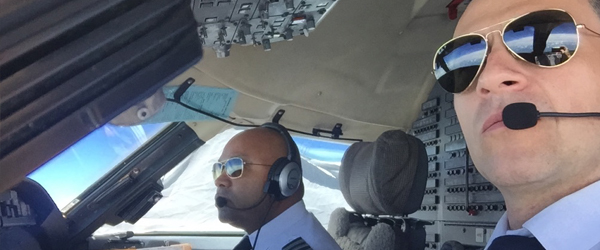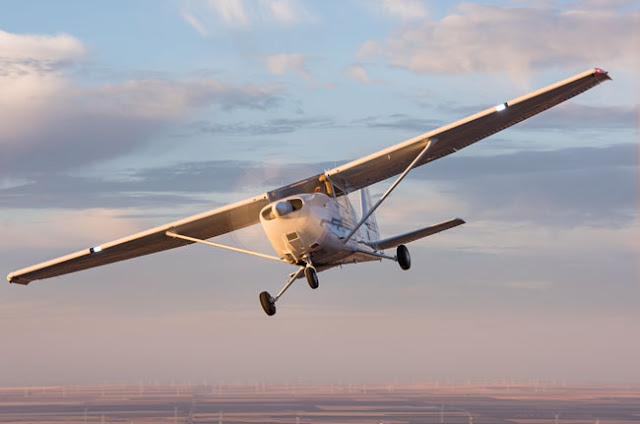Pilot Unions in the United States and Canada: A Comprehensive Exploration
Pilot Unions in the United States and Canada: A Comprehensive Exploration | |||||||||||||||||||||||||||||||||||||||||||
In the ever-evolving realm of aviation, the pilot unions of the United States and Canada emerge as steadfast guardians, championing the rights of aviators, fortifying safety standards, and ensuring equitable working conditions. This narrative embarks on an odyssey through the corridors of time, unraveling the origins, the mission, the operational mechanics, and the resounding impacts of these unions. In the backdrop of their existence, we also delve into the chiaroscuro of their pros and cons, illuminated by the undeniable benefits they bestow upon the soaring spirits who traverse the skies. | |||||||||||||||||||||||||||||||||||||||||||
How it all began The history of pilot unions in North America is a tale of determination, perseverance, and collective action in the pursuit of better working conditions, safety standards, and the protection of pilot interests. As the aviation industry soared to new heights in the early 20th century, pilots faced a multitude of challenges that necessitated the formation of unions to represent their rights and concerns. This essay delves into the historical narrative of pilot unions in North America, tracing their evolution, struggles, and significant milestones. The advent of aviation in the early 20th century witnessed a nascent industry fraught with peril and uncertainty. Pilots were pioneers, braving unpredictable weather, unreliable aircraft, and rudimentary safety measures. These aviators, often considered daredevils, were passionate about their craft, but they lacked the collective voice needed to address the myriad issues they faced. The turning point in the history of pilot unions in North America came with the formation of the Air Line Pilots Association (ALPA) in 1931. This historic event marked the birth of the first major pilot union, spearheaded by David Behncke, a pilot for United Airlines. ALPA sought to bring together pilots from different airlines, uniting their voices and advocating for better working conditions and safety standards. The Fight for Safety and Better Working Conditions ALPA's early focus was on safety issues. In the 1930s, the organization successfully lobbied for stricter pilot licensing standards and the establishment of regular medical examinations for pilots. Their advocacy also led to the introduction of flight data recorders, which are crucial for investigating accidents. During World War II, ALPA temporarily suspended its labor activities to support the war effort, with many pilots becoming military aviators. However, the war years saw a significant boost in the organization's membership. Expanding Influence and Collective Bargaining Post-World War II, ALPA continued to expand its influence. The Taft-Hartley Act of 1947, which allowed airline employees to join unions, provided a significant boost. The association used collective bargaining to secure improved wages, benefits, and working conditions for its members. The Canadian Connection The Air Canada Pilots Association (ACPA) While the United States was witnessing the growth of ALPA, Canada was also establishing its own pilot union. In 1939, the Air Canada Pilots Association (ACPA) was formed, initially as the TCA Pilots' Association, to represent pilots at Trans-Canada Air Lines, the precursor to Air Canada. ACPA, like its American counterpart, focused on improving pilot wages, benefits, and working conditions, along with advocating for safety and regulatory standards. Modern Challenges and Achievements The 1960s and 1970s brought new challenges and opportunities for pilot unions. Deregulation in the 1970s significantly impacted the industry, leading to the bankruptcy of several airlines and labor struggles. In response, pilot unions actively engaged in protecting pilot jobs and maintaining safety standards. Taking Flight Together: The Benefits of Pilot Unions for Aviators Pilot unions have long been a cornerstone of the aviation industry, working tirelessly to protect the rights and welfare of pilots. These unions serve as the collective voice for aviators, advocating for their interests and ensuring that they can pursue their careers with confidence. This essay explores the manifold benefits of pilot unions for those who navigate the skies. Collective Bargaining Power. One of the most significant advantages of pilot unions is their ability to collectively negotiate on behalf of their members. Through collective bargaining, unions can secure improved wages, benefits, and working conditions for pilots. This gives individual pilots a much stronger position when dealing with airline management, as they have the backing of the union and can address issues as a united front. Safety Advocacy. Safety is paramount in the aviation industry, and pilot unions are staunch advocates for ensuring the highest safety standards. They work diligently to enhance safety regulations and promote a culture of safety within the industry. Pilot unions have played a pivotal role in the development and implementation of safety protocols, leading to a safer environment for aviators and passengers alike. Work-Life Balance. The demanding nature of a pilot's job can often lead to challenges in maintaining a healthy work-life balance. Pilot unions actively negotiate duty hours and schedules, ensuring that pilots are not overworked and can enjoy time with their families and pursue personal interests. This balance is crucial for the well-being of pilots, as it helps prevent burnout and fatigue. Job Security Advocacy. Pilot unions act as bulwarks of job security, especially during turbulent times in the industry. They have a history of protecting pilot jobs when airlines face economic downturns, bankruptcies, or changes in business strategies. Pilots can take solace in knowing that their unions are working to safeguard their careers. Professional Development and Training. Many pilot unions offer opportunities for professional development and training. These programs can help pilots advance their careers, learn new skills, and stay up-to-date with the latest industry standards and technologies. This commitment to ongoing learning and improvement benefits both pilots and the airlines they serve. Conflict Resolution. Disputes and conflicts between pilots and airline management can arise in any industry. Pilot unions play a crucial role in mediating these conflicts, working to find mutually beneficial solutions. By offering a forum for dispute resolution, unions help maintain a positive working relationship between pilots and their employers. Advocacy for Fair Compensation. Pilot unions are unwavering in their pursuit of fair compensation. They aim to ensure that pilots are appropriately remunerated for their skills, experience, and the critical nature of their work. Through negotiations and advocacy, unions have helped secure competitive pay packages for pilots. Support in Emergency Situations. Pilot unions are there to support their members in times of emergency or crisis. Whether it's a personal issue or a professional challenge, pilots can turn to their union for guidance and assistance, providing a safety net during difficult times. Challenges Presented by Pilot Unions in the Aviation Industry While pilot unions play a crucial role in advocating for the rights and welfare of aviators, there are concerns and challenges that can have detrimental effects on the aviation industry. These challenges include: Costly Negotiations. The collective bargaining power of pilot unions can lead to expensive negotiations with airlines. Demands for higher wages and better benefits can result in increased operational costs for airlines, potentially impacting ticket prices and profitability. Potential for Strikes. Labor disputes and strikes can disrupt airline operations, inconvenience passengers, and harm the industry's reputation. The threat of strikes can also hinder airlines' ability to plan and operate efficiently. Inflexibility. In some cases, unions can be rigid in their demands, making it challenging for airlines to adapt to changing market conditions. This lack of flexibility may hinder an airline's ability to compete effectively in a dynamic industry. Higher Labor Costs. While pilot unions work to secure competitive compensation, these increased labor costs can impact an airline's ability to offer lower ticket prices, potentially making air travel less affordable for consumers. Division among Pilots. Not all pilots' interests align with the collective decisions made by unions. This can lead to division among pilots, creating a lack of consensus within the workforce. Pilot unions stand as guardians of aviators' rights and welfare, offering a multitude of benefits that enhance the lives and careers of pilots. These unions provide a collective bargaining power, prioritize safety, advocate for job security, support work-life balance, and foster professional development. Pilots can rest assured that their unions are working tirelessly to ensure they can pursue their careers with dignity, security, and a high level of professional satisfaction. And while pilot unions have brought about substantial benefits for aviators, they also present challenges that can have detrimental effects on the aviation industry. Balancing the interests of pilots with the need for a competitive and efficient industry remains a complex and ongoing task. Visit Aerocadet.com for more information about your flight training and internship options. Or contact us via info@aerocadet.com Questions? Comments? Want to discuss your US training, internship and employment options with us? We would be happy to talk to you! Schedule an appointment now via our online scheduling software >>> | |||||||||||||||||||||||||||||||||||||||||||
| |||||||||||||||||||||||||||||||||||||||||||
 | |||||||||||||||||||||||||||||||||||||||||||
| |||||||||||||||||||||||||||||||||||||||||||



Comments
Post a Comment